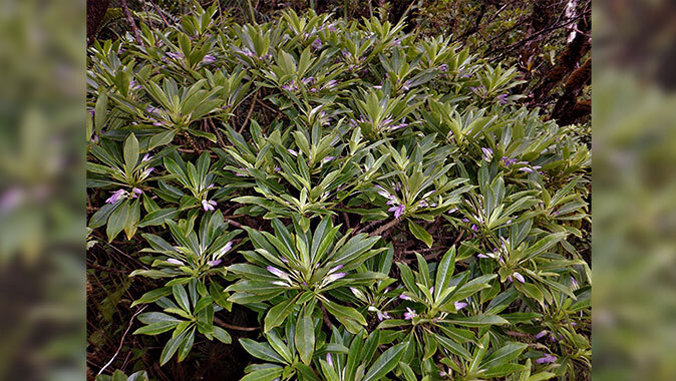
A native plant that was first discovered in the forests of West Maui in 2020 by a University of Hawaiʻi at Mānoa expert has now been officially recognized as a new Hawaiian species.
The plant, named Clermontia hanaulaensis, was found during routine surveys by Hank Oppenheimer, Maui Nui Plant Extinction Prevention Program (PEPP) coordinator. The program is part of the Pacific Cooperative Studies Unit in UH Mānoa’s College of Natural Sciences.
According to experts, the plant species is only found in Hawaiʻi and is likely unique to the mountains of West Maui.
“I decided to just turn a different way and look over a ridge I hadn’t explored before and there they were,” Oppenheimer said. “They looked very different from other Clermontia.”
Clermontia is a genus of plants that evolved in Hawaiʻi and is found nowhere else in the world. They grow as small shrub-like trees on the six largest islands from about 600 to 6,000 feet in elevation. Their long, paddle-shaped leaves grow atop branches that fork. This species flower is lavender and white.
Botanists across the state studied the found plant’s flower and leaf structure, comparing it to herbarium specimens and photos to try to verify that it is a previously undiscovered species. The botanists also ruled out the possibility of the plant being a hybrid of other Clermontia species.
Critically endangered
The patch of this rare plant is currently the only known population, numbering less than 80 adults and 20 seedlings spread out in an area about the size of 10 football fields. They are not growing on protected state lands, however, the private landowner has been a longtime conservation partner.
Since it exists only as a small population with a limited range, it’s already being proposed for critically endangered status. Because there are so few of this rare species in the wild, PEPP has collected seeds and will continue to monitor the population to ensure its survival.
Key threats to rare plants across Hawaiʻi are introduced plants, slugs, pigs and rats which eat seeds and fruit. On Maui, Axis deer pose additional threats.
Clermontia are usually pollinated by native forest birds, which are absent at this population’s elevation due to mosquito-spread avian malaria. They usually grow as mid-canopy plants, under larger trees. A hurricane knocking down larger trees or a single fire could wipe out this newly discovered species.
PEPP marks its 20th anniversary in 2023. Visit its website for more information.

